7 of the best small towns and villages to visit in Tuscany
Driving among the medieval towns dotted across the countryside is a quintessential Tuscan experience
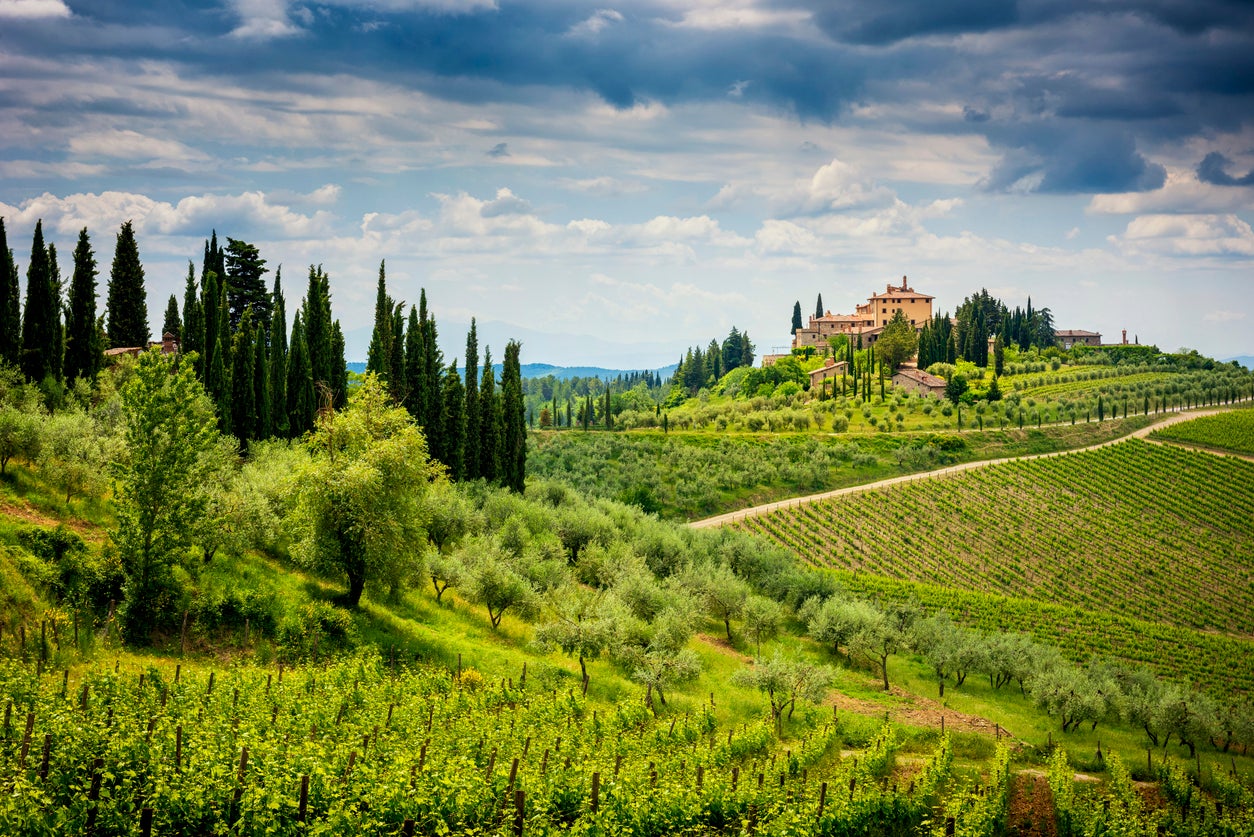
Your support helps us to tell the story
From reproductive rights to climate change to Big Tech, The Independent is on the ground when the story is developing. Whether it's investigating the financials of Elon Musk's pro-Trump PAC or producing our latest documentary, 'The A Word', which shines a light on the American women fighting for reproductive rights, we know how important it is to parse out the facts from the messaging.
At such a critical moment in US history, we need reporters on the ground. Your donation allows us to keep sending journalists to speak to both sides of the story.
The Independent is trusted by Americans across the entire political spectrum. And unlike many other quality news outlets, we choose not to lock Americans out of our reporting and analysis with paywalls. We believe quality journalism should be available to everyone, paid for by those who can afford it.
Your support makes all the difference.Although Italy has no shortage of enchanting holiday destinations – the Amalfi Coast, Cinque Terre, Puglia and Sicily, to name just a few – there’s something particularly magical about Tuscany.
This is a region that often seems to be bathed in a soft golden light, with gently sloping hills and beautiful Italian villas nestled among olive groves, cypress trees and vineyards.
Although you could easily fill your days in the cities of Florence and Pisa, or exploring the narrow streets and central piazza of Siena, perhaps one of the greatest experiences in Tuscany is exploring the many medieval hilltop towns and villages that are scattered through the countryside.
From the famous towers of San Gimignano and charming Pienza to Greve in the wine-making region of Chianti, there are plenty of towns and villages to discover, all with their own unique charms and within easy driving distance of one another. Here are seven of our favourites.
San Gimignano
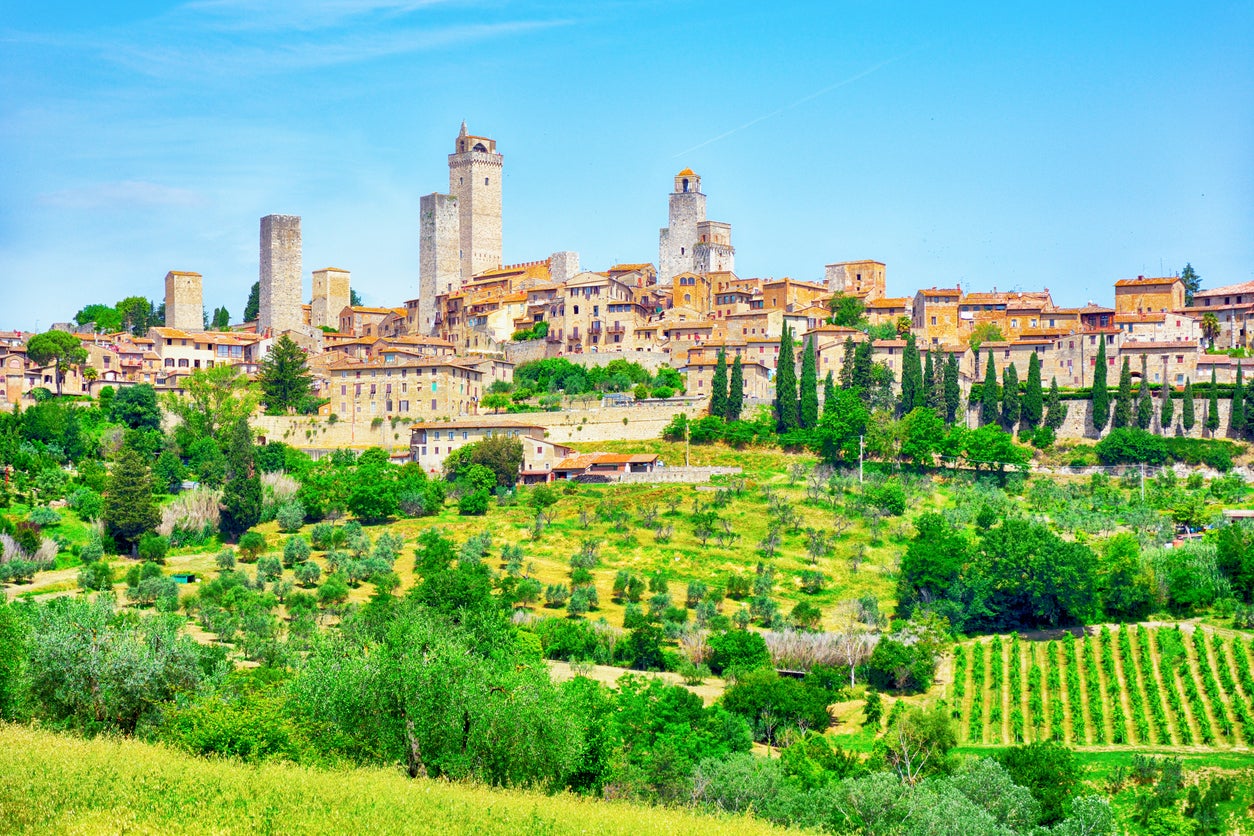
San Gimignano is one of the best known small towns in Tuscany – and for good reason. With its hilltop location, charmimg local restaurants and picture-perfect setting, it’s a favourite among tourists. Visitors can stroll through the medieval streets, stop in at one of the many small shops, gaze at the town’s impressive Duomo cathedral and visit the civic museum at the Palazzo del Popolo.
There’s a fun story behind San Gimignano’s famous towers. Between the 11th and the 13th centuries, the noble families who controlled the town believed their towers were a sign of wealth and power to their political and economic rivals, and so kept building more and more – it is believed that a total of 72 could be found in San Gimignano at its peak. Only 14 have survived, but they’re still rather impressive and give the town a palpable sense of history.
Read more on Italy travel:
Montalcino
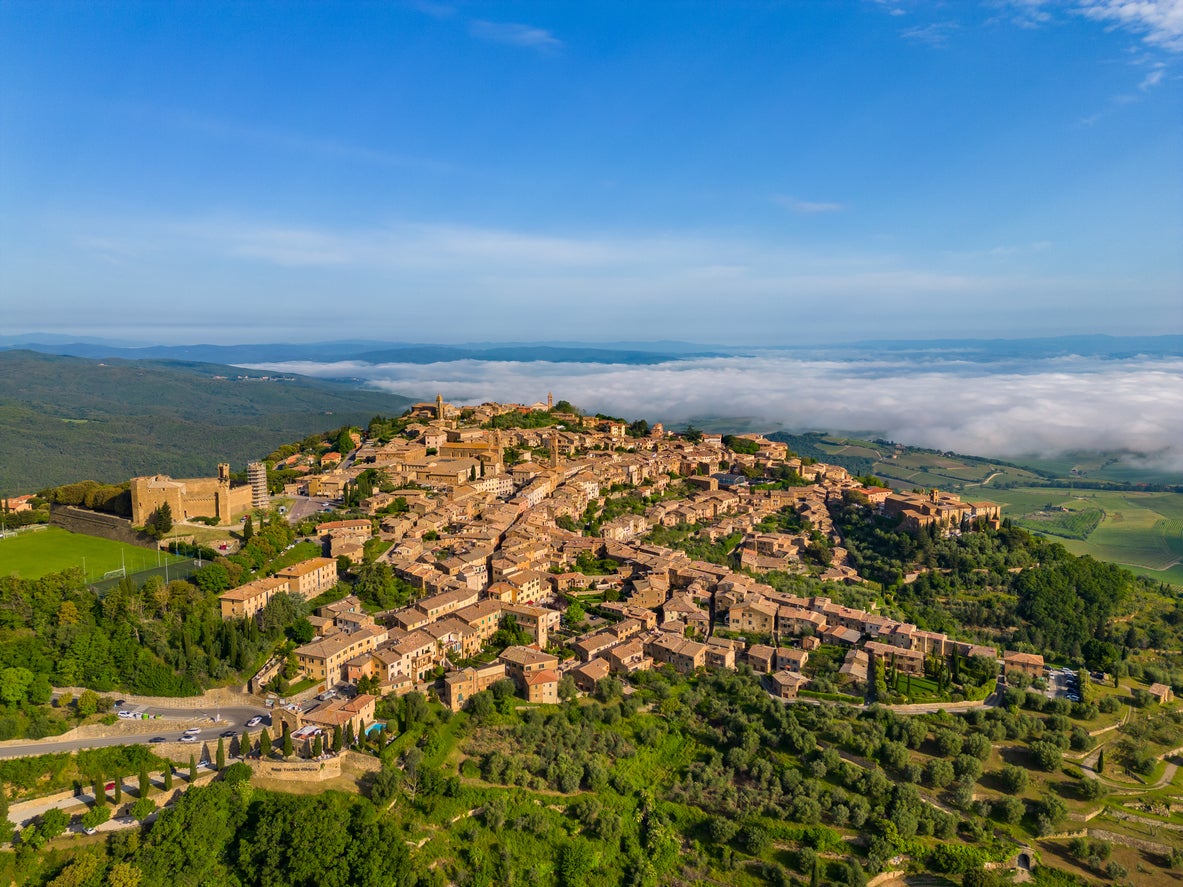
Montalcino is an excellent choice for wine lovers – it’s well known for its brunello di montalcino and rosso di montalcino wines. The location in the hills of the Val d’Orcia gives it an even more rustic setting than other towns on this list. Visitors will find themselves surrounded by countryside dotted with cypress trees and flowers, as well as rolling olive groves and vineyards. Tourists can climb the fortress walls, amble through the winding streets and spend some time on the town’s Piazza del Popolo – but no visitor should miss the wine tastings which can be enjoyed in and around the town.
Pienza

Pienza also lies in the Val d’Orcia, where gently rolling hills are populated by Renaissance towns, vineyards and medieval castles. The town itself is surrounded by medieval walls, inside of which is a maze of pretty cobbled streets lined with typical Tuscan houses. From the town you can enjoy amazing views over the hills and olive groves, and in the distance sits Mount Amiata.
All roads in this town lead to the Pio II plaza, with particularly picturesque streets including the Via dell’Amore and Via del Bacio. The town’s cathedral sits in this square, as does the Palazzo Piccolomini and Palazzo Borgia, which houses the town’s museum.
Greve in Chianti and Montefioralle
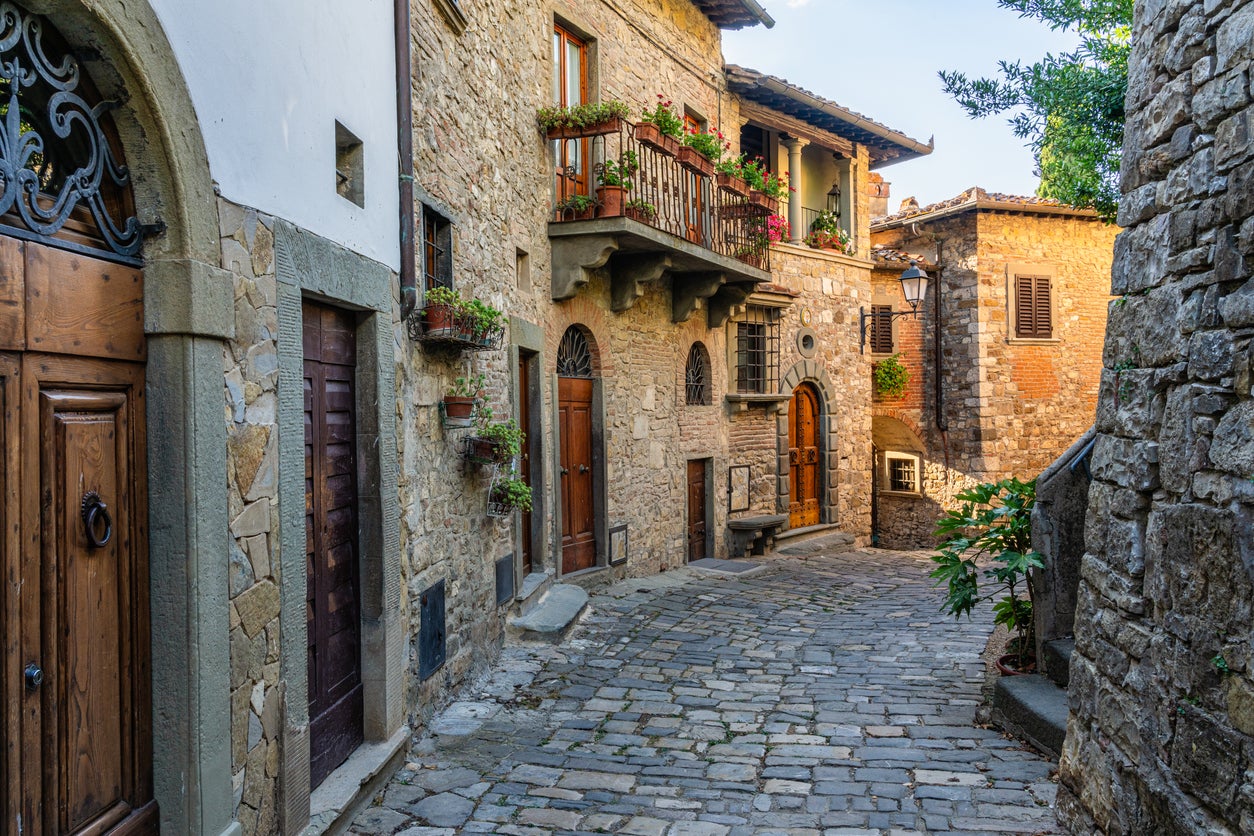
A visit to Tuscany is arguably not complete without a visit to Chianti, the region’s famous wine-producing area. Greve in Chianti is one of the more scenic towns in this part of Tuscany – it’s centred around the triangular Piazza Matteotti, the porticos of which hide vendors of various fresh produce.
In the foothills just below Greve in Chianti lies Montefioralle, one of the oldest villages in Tuscany. It’s still enclosed by its original defensive walls, and its (nearly) car-free centre is a great place for a relaxed stroll. The surrounding vineyards will likely be the focus of your visit, but be sure to climb up the hills to the highest point in the village where you can see the Santo Stefano church and take in a sweeping view of the vineyards, olive groves and cypress trees.
Volterra
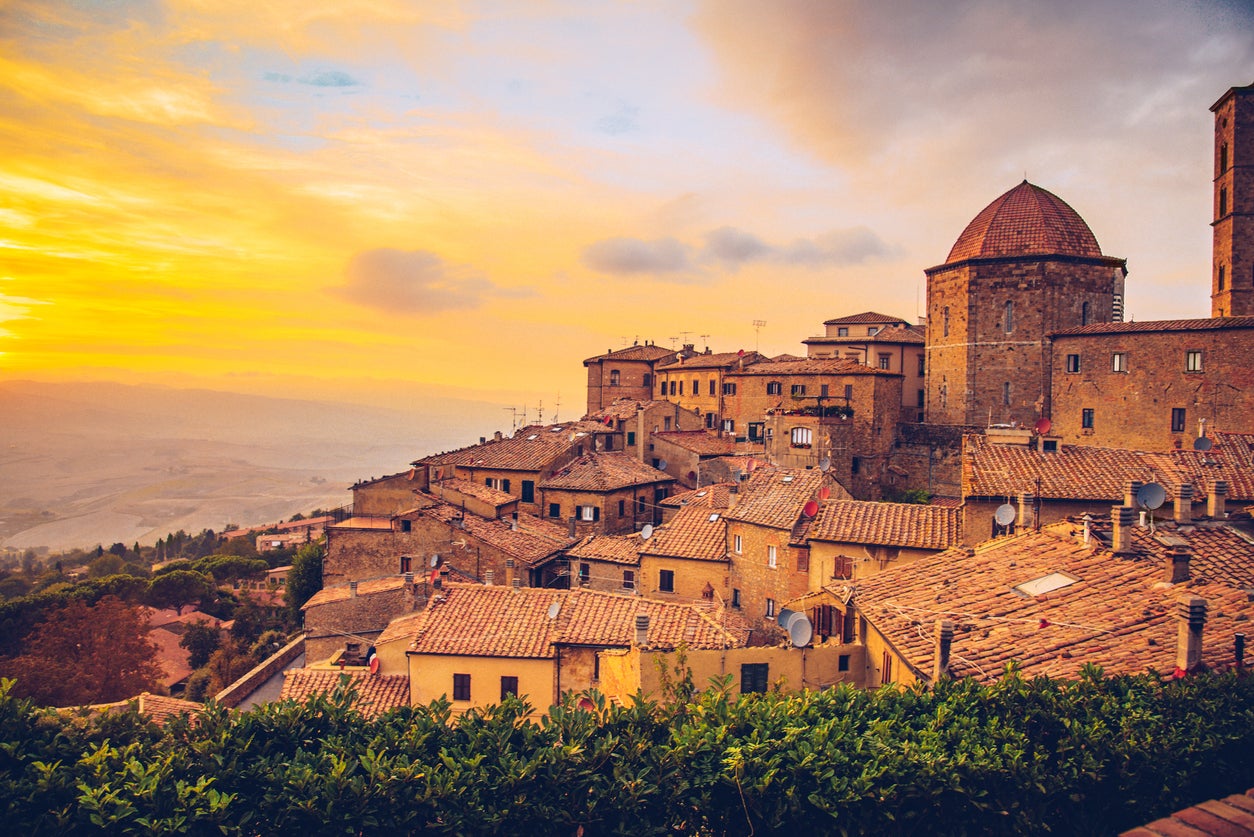
Volterra was once a mighty Etruscan city, but nowadays it is best known for Italian handicrafts and remnants of its medieval past. It is dominated by its Duomo along with the Palazzo dei Priori and 13th-century palazzo, though the 2,000-year-old Roman amphitheatre is another highlight. Remnants of its Etruscan past remain in the 5th-century Porta all’Arco walls and the Guarnacci Etruscan Museum, while the smaller Pinacoteca museum focuses on art from between the 14th and 17th century.
Pitigliano
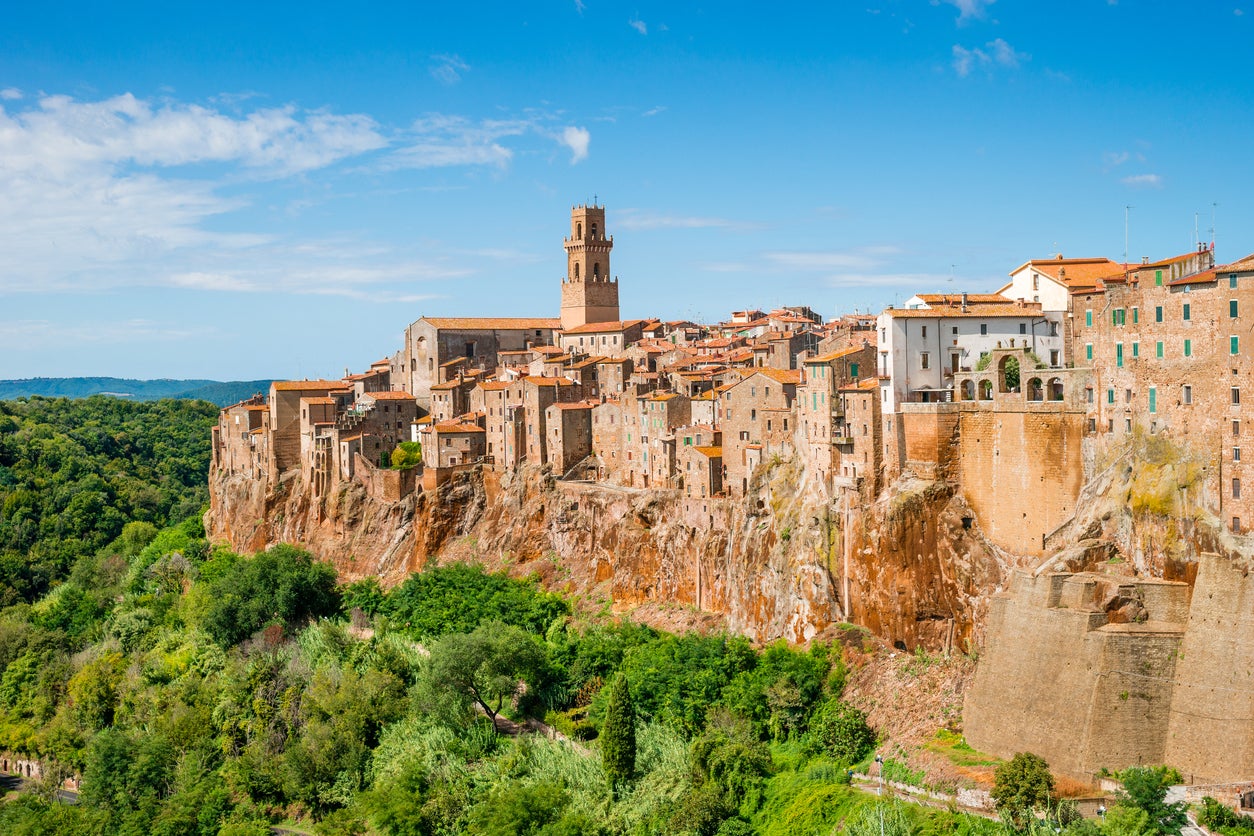
Pitigliano is located in the Maremma region near the Tuscan coast. It’s another hilltop town, and features rows of sandstone buildings built on top of volcanic red “tuff” stone. As well as enjoying wine tastings, tourists can amble through the mazy streets, stop for a drink or bite to eat around the lovely Piazza del Popolo, explore the palace-fortress of Palazzo Orsini (and its museum) and visit the Sette Cannelle fountain.
This town is also known as “Little Jerusalem” as a large Jewish population resided there until around the time of the Second World War, and there are several remnants of its religious history still present, from an old Jewish Quarter – now with a Jewish museum – to a gilded synagogue.
Pietrasanta
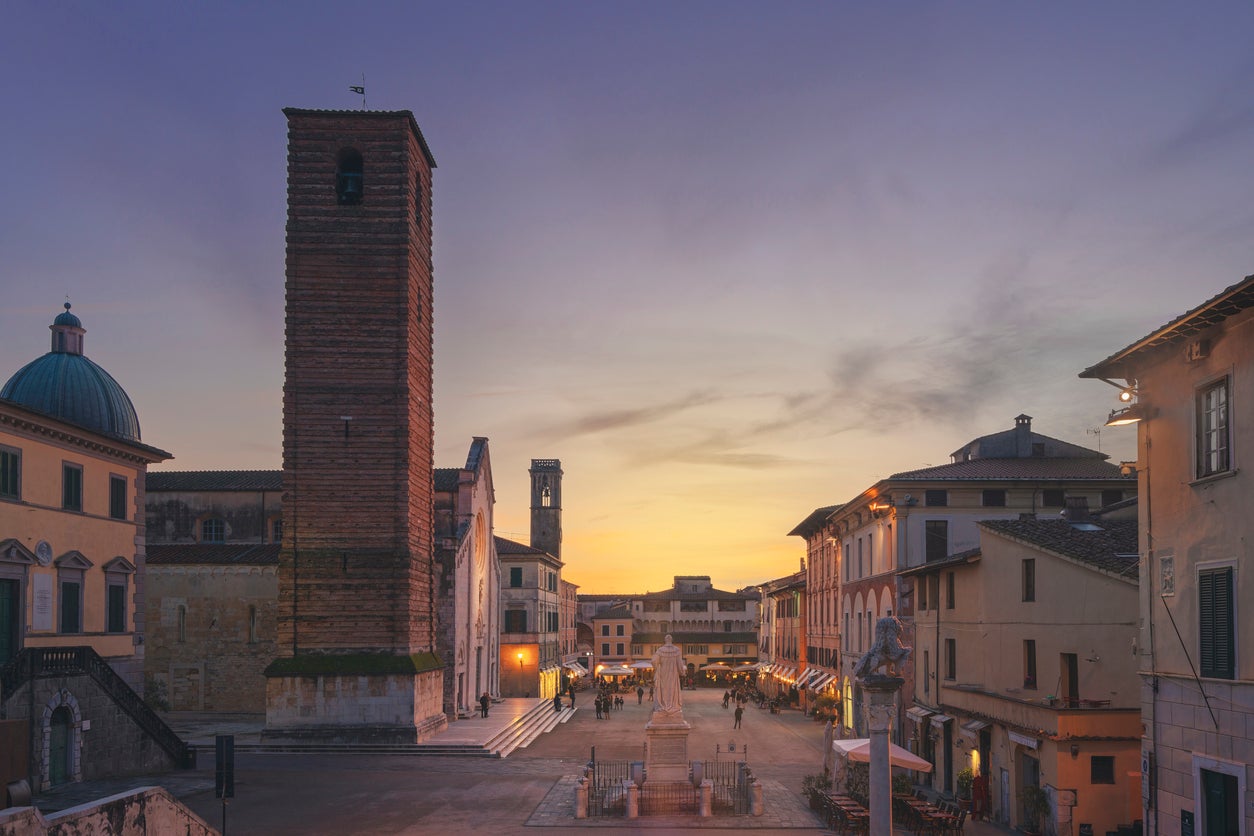
Pietrasanta still retains some of the artistic creativity that was associated with it in bygone times when artists such as Michelangelo frequented the town. Today it has one of the highest concentrations of art galleries in any Italian town, from the Favret Mosaici Artistici to the Flora Bigae gallery of contemporary art.
Pietrasanta is located very close to the coast, near upmarket resorts like Forte dei Marmi, and so is a town influenced by both local history and modern tourism. Away from the beaches, the highlights include the Duomo and the Rocca di Sala fortress, while an archaeological museum, marble quarry and yearly performing arts festival (named La Versiliana) are a little more off the beaten track.
Read more on Italy with the best hotels in Rome
Join our commenting forum
Join thought-provoking conversations, follow other Independent readers and see their replies
Comments